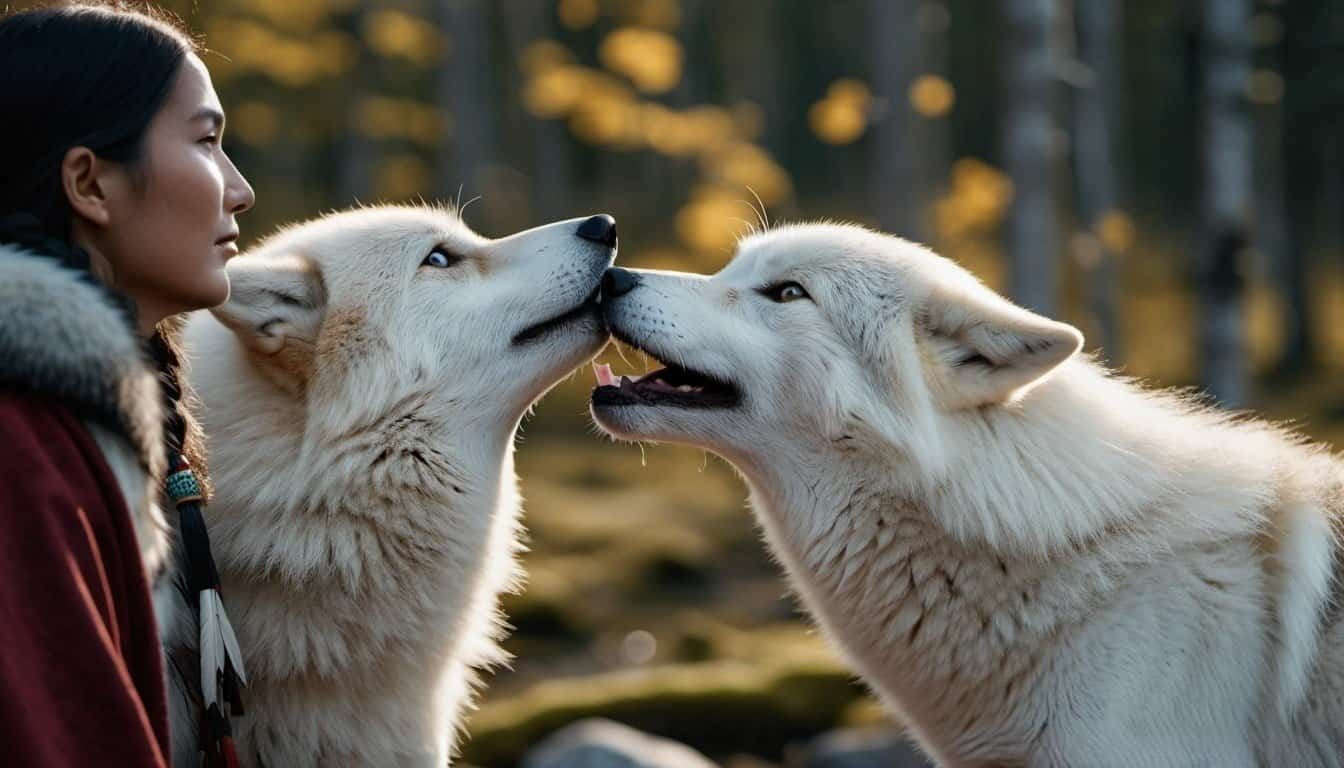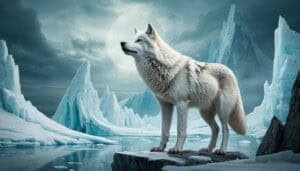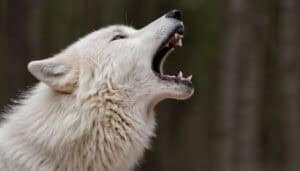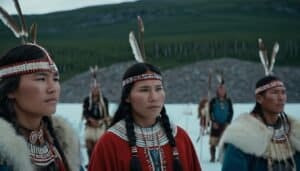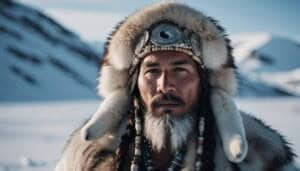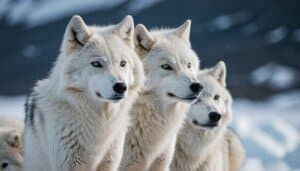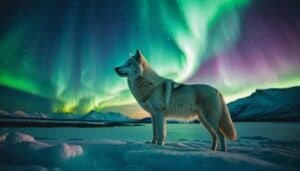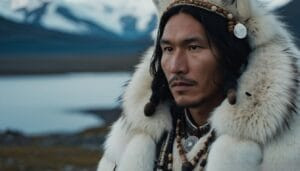Introduction
Arctic wolves play a crucial role in the lives and cultures of Arctic peoples, influencing their social structures, survival strategies, and cultural practices
This article delves into the multifaceted relationship between Arctic wolves and Arctic communities, exploring how these majestic animals are intertwined with the kinship systems and daily lives of indigenous peoples
We will examine the social roles and cultural significance of Arctic wolves, their contribution to survival strategies, daily interactions, and the evolution of their relationship over time
Influence of Arctic Wolves on Social Structure
Arctic wolves have a profound impact on the social structure of Arctic peoples, serving as both symbolic and practical elements within their communities
These animals are more than just part of the natural landscape; they are integral to the social fabric of the indigenous populations living in the Arctic
Social Roles of Arctic Wolves
In many Arctic cultures, wolves are seen as important social figures. They are often regarded as teachers and guides, embodying traits such as strength, endurance, and cooperation that are highly valued in these communities
The social organization of wolves, which includes complex hierarchies and cooperative hunting strategies, mirrors the social structures of many Arctic peoples, who also rely on strong kinship ties and collaborative efforts to survive in their harsh environment
Wolves are often observed for their behavior and interactions, providing lessons on leadership, loyalty, and teamwork. These observations are not just casual but are integrated into the teachings and socialization of young members of the community
For instance, the way wolves care for their young and hunt in packs is used as a model for human behavior and social organization
Kinship Ties and Arctic Wolves
Kinship systems in Arctic societies are deeply influenced by the presence and behavior of wolves
These animals are often considered part of the extended family or clan systems, with certain families or clans identifying themselves with the wolf. This identification can be symbolic, as in totemic practices, where the wolf totem serves as a spiritual emblem and a symbol of the family’s identity and values
In some cultures, there are stories and legends that describe humans transforming into wolves and vice versa, blurring the lines between human and animal kinship. These narratives reinforce the idea of a shared existence and mutual respect between Arctic peoples and wolves
The kinship ties with wolves are reflected in rituals, naming practices, and even in the way communities organize their social hierarchies and resolve conflicts
Community Dynamics and Wolves
The presence of wolves in Arctic communities influences not only individual families but also the broader community dynamics
Wolves are often seen as protectors of the community, and their howls can be interpreted as warnings or messages. This protective role enhances the bond between humans and wolves, fostering a sense of mutual guardianship
Moreover, wolves play a role in the ecological balance, which directly affects the community. By controlling the populations of prey animals, wolves ensure that there is a sustainable balance in the ecosystem, which is crucial for the survival of both wolves and humans
This balance supports the subsistence lifestyles of Arctic peoples, who rely on hunting and gathering
Wolves also feature prominently in community ceremonies and gatherings. They are celebrated in dances, songs, and stories that are passed down through generations, reinforcing their importance in the social and cultural life of the community
These cultural expressions serve to strengthen community bonds and ensure that the knowledge and respect for wolves are maintained
Cultural Significance of Arctic Wolves
Arctic wolves hold a prominent place in the cultural traditions and spiritual beliefs of Arctic peoples. Their presence in folklore, symbolism, and traditional practices highlights the deep respect and reverence that these communities have for these majestic animals
Symbolism in Arctic Cultures
In many Arctic cultures, wolves are powerful symbols representing various attributes and values. They often symbolize strength, endurance, and intelligence—qualities that are essential for survival in the harsh Arctic environment
The wolf’s keen sense of cooperation and loyalty is also emblematic of the strong communal bonds that are vital for Arctic peoples
Wolves are frequently depicted in art, such as carvings, masks, and totems. These artistic representations are not merely decorative; they convey deep spiritual and cultural meanings. For example, a wolf totem might symbolize protection, guidance, or a connection to the spirit world. In some traditions, wolves are seen as guardians of the land, and their images are used in ceremonies to invoke their protective spirit
Folklore and Legends
The rich tapestry of folklore and legends among Arctic peoples often features wolves in central roles
These stories serve multiple purposes: they are a means of cultural transmission, moral instruction, and entertainment. Wolves in these tales are often portrayed as wise and cunning, sometimes taking on supernatural qualities
One common motif is the wolf as a shape-shifter, capable of transforming into a human and vice versa. These stories reflect the belief in a profound connection between humans and wolves, suggesting that they share more than just the same environment. Such legends emphasize themes of respect, reciprocity, and balance with nature
In some narratives, wolves are depicted as the ancestors or spirit guides of human characters. These stories are integral to the cultural identity of many Arctic peoples, reinforcing their view of wolves as sacred beings with important roles in their cosmology
Traditional Beliefs
Traditional beliefs about wolves among Arctic peoples are deeply intertwined with their understanding of the natural world and their place within it
Wolves are often seen as messengers or omens, their behavior interpreted as signals from the spiritual realm. For instance, a wolf howling near a village might be seen as a warning or a sign of an impending event
These beliefs are reflected in the rituals and practices of Arctic communities. For example, hunters might perform specific ceremonies to honor the wolves and ask for their guidance and protection. These practices underscore the reciprocal relationship between humans and wolves, where respect and honor are paramount
Additionally, some Arctic peoples believe in the concept of animal spirits or totems, where a person or family is spiritually connected to a particular animal, such as the wolf. This connection is believed to bestow certain traits and guidance from the animal to the person. It also entails a responsibility to protect and respect the animal, further reinforcing the bond between humans and wolves
The spiritual significance of wolves is also evident in healing practices and shamanic traditions. Shamans might invoke the spirit of the wolf during healing rituals, seeking their strength and wisdom to aid in the recovery of the sick
These practices highlight the belief in the interconnectedness of all life forms and the spiritual power of animals
Arctic Wolves in Survival Strategies
Arctic wolves play a critical role in the survival strategies of Arctic peoples, contributing to their hunting practices, protection mechanisms, and resource management. These interactions are vital for the sustenance and safety of indigenous communities living in the challenging Arctic environment
Hunting Assistance
Arctic wolves are known for their exceptional hunting skills, which are often observed and emulated by Arctic peoples. Wolves are strategic hunters, using their keen senses and coordinated pack tactics to track and take down prey. Indigenous hunters study these techniques, gaining insights into animal behavior, movement patterns, and hunting strategies
In some cases, Arctic peoples and wolves engage in a form of symbiotic hunting. Wolves may drive prey towards human hunters, who then make the kill
This collaborative effort increases the chances of a successful hunt, ensuring that both humans and wolves benefit. Such partnerships highlight the deep connection and mutual respect between Arctic peoples and wolves
Additionally, the presence of wolves can help hunters locate herds of caribou or other game animals. By following wolf tracks and observing their behavior, hunters can determine the whereabouts of potential prey. This knowledge is invaluable, especially in the vast and often desolate Arctic landscape, where finding food can be a daunting task
Protection and Guidance
Wolves provide protection to Arctic communities by keeping the populations of other potentially dangerous animals in check
For instance, by preying on herbivores such as caribou and muskox, wolves help maintain a balance in the ecosystem, preventing overgrazing and ensuring that vegetation remains sufficient for both wildlife and human needs
Moreover, wolves are seen as guardians and guides. Their presence can deter other predators, such as bears, from approaching human settlements. The howls of wolves, often considered eerie by outsiders, are comforting to Arctic peoples, signaling the wolves’ watchful presence and the community’s safety
In some traditions, wolves are believed to have spiritual abilities to guide and protect individuals during journeys. This belief is particularly important for hunters and travelers who navigate the harsh Arctic terrain
Wolves, known for their navigational skills and ability to cover vast distances, are seen as role models and protectors for those venturing into the wilderness
Resource Sharing
Resource sharing between Arctic wolves and Arctic peoples is another critical aspect of their survival strategy. In times of scarcity, the remains of wolf kills can provide additional food sources for human communities. This practice, while opportunistic, underscores the interconnectedness of humans and wolves in the Arctic
Conversely, Arctic peoples also share resources with wolves. It is not uncommon for hunters to leave parts of their catch for wolves, fostering a relationship of reciprocity. This sharing ensures that wolves remain healthy and strong, which in turn benefits the ecosystem and the human communities that depend on it
The respect for wolves extends to sustainable hunting practices. Indigenous peoples often hunt with consideration for the wolf populations, ensuring that their hunting activities do not deplete the wolves’ primary food sources. This balance is crucial for maintaining the health and stability of the Arctic ecosystem, upon which both humans and wolves rely
Interaction with Arctic Wolves
The daily interactions between Arctic peoples and Arctic wolves are multifaceted, encompassing both practical and spiritual dimensions. These interactions reflect a deep respect and understanding that has developed over generations, highlighting the integral role of wolves in the lives of Arctic communities
Daily Life Interactions
Arctic peoples often encounter wolves during their daily activities, such as hunting, fishing, and traveling
These interactions are usually marked by mutual respect and cautious observation. Wolves are considered sentient beings with their own social structures and territories, and indigenous peoples are careful to respect these boundaries
In some regions, wolves and humans share hunting grounds. While this could lead to competition, it often results in a form of coexistence where both species benefit from each other’s presence. For instance, wolves might drive prey towards human hunters, inadvertently assisting in the hunt. In return, humans leave parts of their kills for the wolves, ensuring they have food as well
Children in Arctic communities grow up learning about wolves, their behaviors, and their significance. This knowledge is passed down through stories, teachings, and direct experience. Such education fosters a sense of respect and coexistence, ensuring that future generations continue to honor and understand these important animals
Ceremonial Roles
Wolves hold significant ceremonial roles in many Arctic cultures. They are often featured in rituals, dances, and ceremonies that celebrate their spirit and connection to the community. These ceremonies can mark important events, such as the start of the hunting season, and are designed to honor the wolves and seek their guidance and protection
One example of such a ceremony is the wolf dance, where participants don wolf masks and perform traditional dances that mimic the movements and behaviors of wolves. These dances are not only a form of cultural expression but also a way to invoke the spirit of the wolf, seeking its strength and wisdom
In some cultures, wolves are believed to be spiritual messengers, and their howls are interpreted as communications from the spirit world. Ceremonial practices might include listening to and interpreting wolf howls, which can be seen as omens or messages from ancestors and spirits
Communication Practices
Communication with wolves is an important aspect of the relationship between Arctic peoples and these animals. Indigenous hunters and trackers often use vocalizations and body language to interact with wolves, either to signal their presence or to understand the wolves’ messages
Hunters may mimic wolf howls to locate packs or to signal their own presence, establishing a form of communication that transcends species boundaries. This practice requires a deep understanding of wolf behavior and vocalizations, as well as a respectful approach to ensure that the wolves do not perceive the humans as threats
Additionally, Arctic peoples observe wolf behavior closely to gain insights into the environment. Wolves’ reactions to changes in the weather, the presence of other animals, and other environmental factors can provide valuable information to human observers
This observational practice is a form of silent communication that enhances the understanding and cooperation between humans and wolves
Evolution of Relationship
The relationship between Arctic peoples and Arctic wolves has evolved over time, adapting to changes in the environment, technology, and cultural practices. This dynamic relationship showcases the resilience and adaptability of both wolves and humans in the face of various challenges
Historical Perspectives
Historically, the bond between Arctic peoples and wolves has been one of mutual respect and interdependence. Archaeological evidence and oral histories indicate that this relationship dates back thousands of years. Early Arctic communities relied on wolves for insights into hunting strategies and survival techniques, observing their behavior to learn about tracking and trapping prey
Wolves have long been seen as important members of the ecosystem, playing a critical role in maintaining the balance of nature. Indigenous peoples recognized the value of wolves in controlling prey populations and ensuring the health of the environment
This ecological understanding fostered a sense of stewardship and respect for wolves, leading to cultural practices that honored their presence
Traditional stories and legends from various Arctic cultures reflect this ancient relationship. Tales of wolf ancestors, spirit guides, and shape-shifters highlight the deep spiritual connection that Arctic peoples have with wolves. These narratives have been passed down through generations, preserving the cultural significance of wolves and reinforcing the importance of maintaining a harmonious relationship with them
Modern-Day Interactions
In contemporary times, the relationship between Arctic peoples and wolves has continued to evolve. While some traditional practices have persisted, modern technology and changes in lifestyle have influenced how these interactions occur
For example, the use of snowmobiles and advanced hunting equipment has altered the way Arctic peoples hunt and travel, impacting their direct interactions with wolves
Despite these changes, the respect and reverence for wolves remain strong. Many Arctic communities continue to incorporate wolves into their cultural practices and teachings. Educational programs and community initiatives often include lessons about the ecological role of wolves and the importance of coexisting with them. These efforts aim to preserve traditional knowledge while adapting to modern circumstances
Conservation efforts have also become a significant aspect of the modern relationship between Arctic peoples and wolves. Indigenous communities often play a crucial role in protecting wolf populations and their habitats
By advocating for sustainable hunting practices and participating in wildlife management programs, Arctic peoples contribute to the conservation of wolves and the broader Arctic ecosystem
Future Projections
Looking to the future, the relationship between Arctic peoples and wolves will likely continue to adapt to changing environmental and social conditions
Climate change poses a significant threat to the Arctic region, affecting the habitats and food sources of both wolves and humans. As the environment changes, Arctic peoples and wolves will need to find new ways to coexist and support each other
Technological advancements and increased scientific understanding of wolves and their ecosystems may offer new opportunities for collaboration and conservation. By combining traditional knowledge with modern science, Arctic communities can develop innovative strategies to protect and preserve wolf populations. This integrated approach can enhance the resilience of both wolves and humans in the face of future challenges
Cultural preservation will also play a vital role in the future relationship between Arctic peoples and wolves. Efforts to document and share traditional stories, practices, and beliefs about wolves can help maintain the cultural heritage of Arctic communities
These cultural expressions not only celebrate the historical bond between humans and wolves but also inspire new generations to honor and protect this important relationship
Conclusion
The relationship between Arctic peoples and Arctic wolves is a profound example of coexistence and mutual respect between humans and nature. This connection, which spans thousands of years, encompasses various aspects of daily life, cultural significance, survival strategies, and evolving interactions
Arctic wolves play a critical role in the social structure of Arctic communities, influencing kinship ties, community dynamics, and cultural expressions. Their presence in folklore, symbolism, and traditional beliefs underscores their revered status in Arctic cultures
Wolves are integral to the survival strategies of Arctic peoples, assisting in hunting, providing protection, and participating in resource sharing. Daily interactions and ceremonial roles further highlight the deep bond and communication practices between humans and wolves. This relationship has evolved over time, adapting to historical, modern, and future contexts
As climate change and technological advancements reshape the Arctic landscape, the dynamic relationship between Arctic peoples and wolves will continue to adapt, reflecting the resilience and enduring connection between these communities and their natural environment
Understanding and preserving this relationship is crucial for the cultural heritage and ecological balance of the Arctic region. By integrating traditional knowledge with modern conservation efforts, Arctic peoples can ensure the protection of wolves and the sustainability of their communities for generations to come
